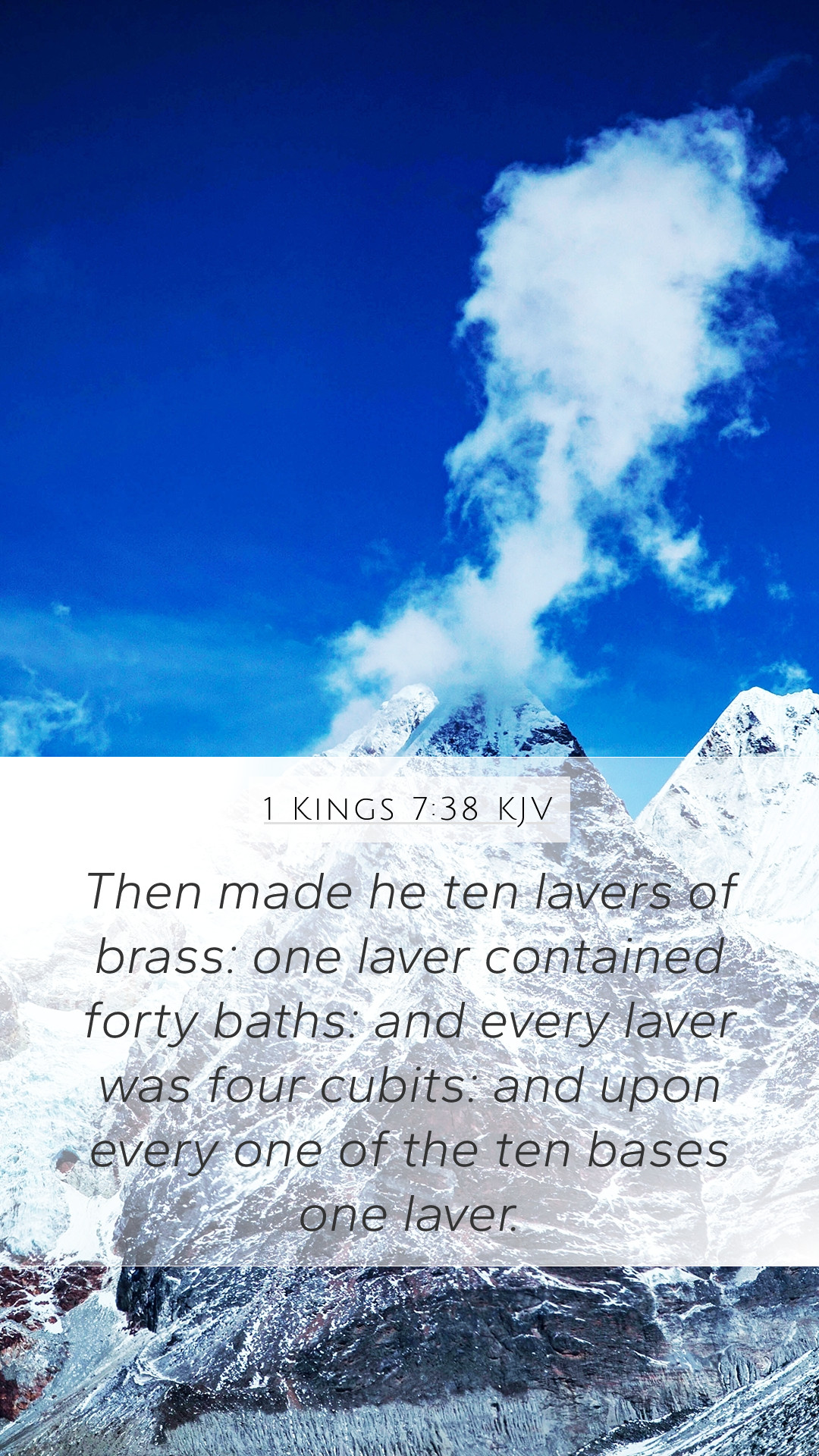Bible Verse Meaning of 1 Kings 7:38
Verse: 1 Kings 7:38 states, "Then made he ten lavers of brass; one laver contained forty baths: and every laver was four cubits: and upon every one of the ten bases one laver." This represents a profound element within the construction of Solomon's temple, which is rich in meaning and significance.
Summary of Insights
This verse depicts the immense scale and detailed craftsmanship that went into the temple's furnishings. The lavers were significant for ceremonial washing, embodying purification and preparation before offering sacrifices to God.
Key Themes and Interpretations
- Purity and Cleansing: The lavers were essential for the priests to wash themselves before performing their sacred duties. As Adam Clarke notes, this illustrates the need for spiritual cleansing.
- Symbolism of Water: Water often symbolizes life and renewal in Scripture, suggesting that God's presence purifies and revitalizes His people (as reflected in Matthew Henry's commentary).
- God's Provision: The lavish details of the temple serve as a reminder of God's generous provision for His people, making worship possible (Albert Barnes highlights this abundance).
- Preparation for Worship: The lavers indicate that preparation is necessary for approaching God. This is similar to how believers today should prepare their hearts for worship.
Detailed Exegesis
This verse is embedded within the context of the temple's grandeur and signifies the importance of purity in worship. According to Matthew Henry, the lavers indicate the necessity for sanctification before entering into God’s presence, mirroring the New Testament concept of being washed in the blood of the Lamb.
Meaning of the Lavish Construction
As noted by Albert Barnes, the construction of the lavers reflects Solomon's commitment to honor God through the beauty of the temple. This grandeur serves as a reminder that God deserves our best offerings in worship and service.
Understanding the Historical Context
1 Kings 7:38 must be understood within the broader narrative of Solomon’s reign and the establishment of the temple. This monumental structure not only provided a place for worship but also represented the covenant relationship between God and Israel.
Applicability to Modern Believers
The principles derived from 1 Kings 7:38 apply to our lives today, emphasizing preparation and purification before we engage in acts of worship or service. It encourages an introspective approach to how we live out our faith in preparation for offering ourselves to God.
Further Bible Study Insights and Resources
For those in Bible study groups or engaging in online Bible study, this passage provides rich material for discussion. Using Bible study tools and resources can enhance understanding:
- Bible study guides that focus on Old Testament worship practices.
- Bible study lessons related to the significance of purity in worship.
- Bible study courses addressing the symbolism in the temple’s construction.
Related Bible Cross References
- Exodus 30:18 - The brazen laver and its purpose.
- 2 Chronicles 4:6 - Further description of the lavers made for the temple.
- Hebrews 9:10 - A New Testament reflection on the holy rituals.


